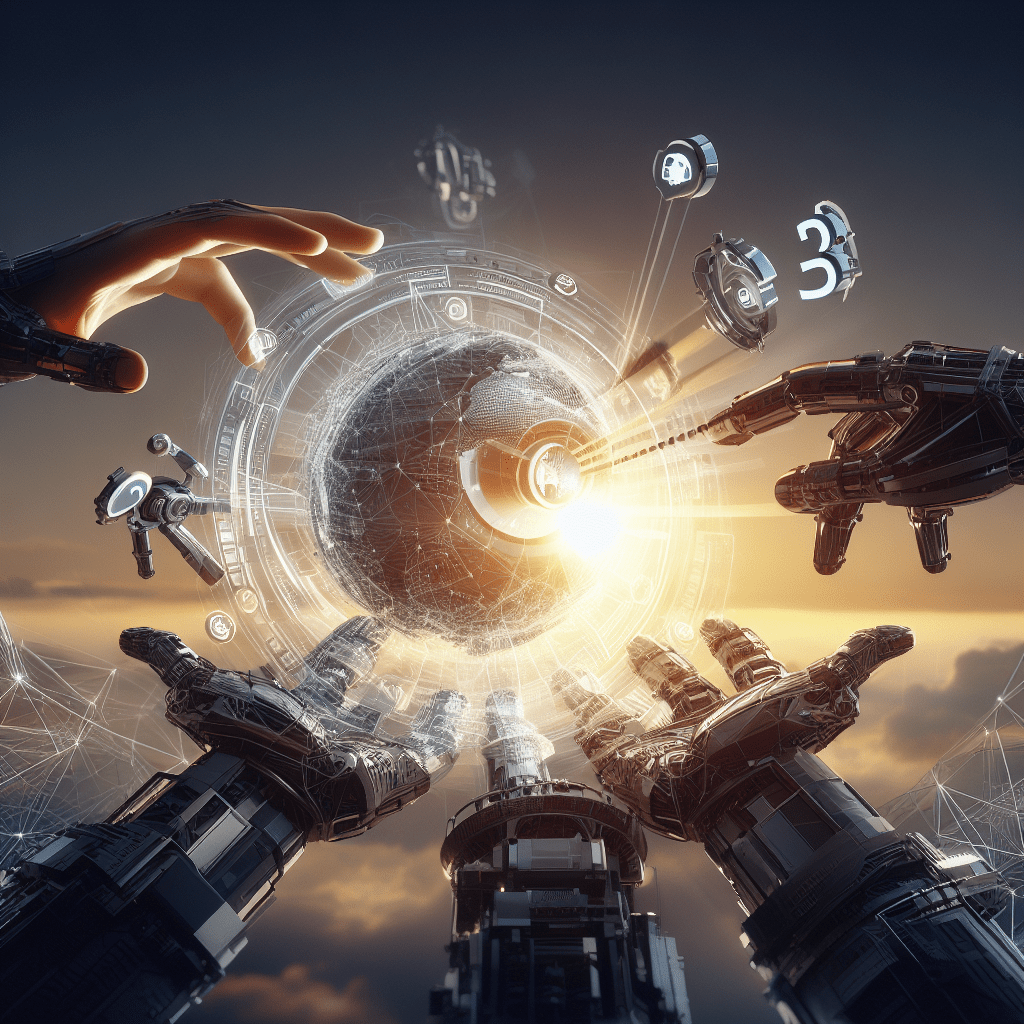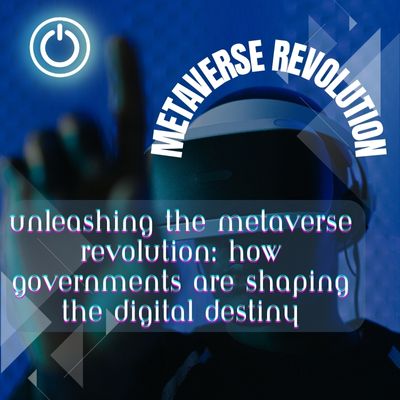Unveiling the Web3 Revolution: 7 Pointers Transforming the Internet.
Exploring Web3 Revolution Today
The internet has come a long way since its inception. But now, a new wave of innovation is here – Web3 companies are revolutionizing the online realm like never before. In this blog post, we’ll dive deep into how these companies are driving the web3 revolution & reshaping the internet and explore practical examples that showcase their game-changing potential.

Header Outline:
The Essence of Web3 and its Evolution
Decentralization: Empowering Users and Removing Intermediaries
Tokenization and Digital Ownership
Interoperability: Bridging the Digital Divide
Smart Contracts: Paving the Way for Trust and Efficiency
Practical Applications and Examples of Web3 Companies
Challenges and Future Prospects of the Web3 Revolution
Conclusion: Embracing the Web3 Future
1. The Essence of Web3 and its Evolution
Web3, which is often called the “decentralized web,” stands as a remarkable leap forward in the evolution of the internet. In contrast to its predecessor, Web2, where we were mainly consumers of content, Web3 has bestowed upon us the power to not only participate but also contribute actively. The platforms that we engage with are no longer mere tools; they’ve become communities where we hold a stake and even have a say in their governance.
Consider platforms like Decentraland. In the past, my online interactions were limited to browsing, liking, and sharing content. But now, with Decentraland, I’ve become a digital landowner, shaping virtual landscapes and contributing to a shared economy. This transformation from passive consumption to active involvement has turned the internet into a realm where I’m no longer just a user – I’m an integral part of the ecosystem.
Furthermore, take the example of Brave browser’s Basic Attention Token (BAT). In the Web2 era, I’d mindlessly encounter ads while browsing, earning nothing but annoyance in return. However, Web3 has enabled me to earn BAT tokens for my attention and engagement with advertisements. This simple switch has fundamentally shifted the dynamic – I’m now rewarded for my participation and data sharing, transforming me from a passive viewer into an active participant in the advertising ecosystem.
The essence of Web3 goes beyond technological advancements; it’s a shift in mindset. It’s about realizing that the internet is no longer a one-way street. Through my interactions on blockchain-powered platforms, I’ve come to understand that my actions can shape the digital landscape, and the power to govern and influence is no longer concentrated in the hands of a few.
In summary, Web3’s evolution has revolutionized the internet from a passive content consumption platform to an interactive and participatory space. Through my experiences with platforms like Decentraland and Brave Browser, I’ve witnessed firsthand the empowerment that comes with active involvement. This shift marks a significant leap in our digital journey – one where I’m not just a bystander but an active co-creator of the online world.
2. Decentralization: Empowering Users and Removing Intermediaries
Web3 companies leverage blockchain technology to decentralize power. They’re breaking away from the traditional centralized model, allowing users to have more control over their data and digital experiences. For instance, Brave browser’s Basic Attention Token (BAT) enables users to earn rewards for viewing ads.
3. Tokenization and Digital Ownership
Tokens are at the heart of Web3. These digital assets represent ownership in a decentralized ecosystem. This ownership extends beyond digital art (NFTs) to real estate, virtual land, and more. The success of CryptoKitties showcased the potential of tokenization beyond traditional currencies.
4. Interoperability: Bridging the Digital Divide
Interoperability stands at the heart of Web3’s transformative potential, facilitating a harmonious connection between diverse platforms and blockchains. This innovation resonates deeply with me, as it signifies the breaking down of digital barriers and the creation of a unified online experience.
Imagine a digital landscape where various platforms speak the same language. This is precisely what Web3 achieves through interoperability. I’ve witnessed this firsthand with the Polkadot project. Polkadot doesn’t just function as a blockchain; it’s an entire network designed to weave different blockchains together seamlessly. This means that various specialized blockchains can collaborate, each contributing its unique strengths while collectively enriching the ecosystem. The beauty of this is that I can engage with applications and services across multiple blockchains as if they were a cohesive entity.
Consider a scenario where I utilize a decentralized finance (DeFi) application on one blockchain and then transition seamlessly to another blockchain for a gaming experience. In the Web2 era, this kind of shift was complex and often required a convoluted process. However, with Web3’s interoperability, I can enjoy a fluid and integrated journey, moving between blockchains with ease. This fosters a sense of inclusivity and connection, where the digital divide begins to dissolve.
Interoperability’s impact goes beyond convenience; it’s a solution to scalability challenges. Previously, blockchains operated in isolation, limiting their capacity. But through interoperability, they work together harmoniously, amplifying scalability potential. As each blockchain collaborates, the collective capacity becomes greater than the sum of its parts. This innovative approach envisions a digital realm where I can explore and utilize a multitude of applications without the friction caused by isolated networks.
In essence, Web3’s interoperability doesn’t just bridge digital divides; it unifies experiences and broadens horizons. Through my interaction with projects like Polkadot, I’ve witnessed how platforms from different corners of the blockchain universe can collaborate to create a harmonious and scalable ecosystem. This interconnected future doesn’t merely make my digital journey smoother; it transforms it into an integrated adventure where the possibilities are boundless.
5. Smart Contracts: Paving the Way for Trust and Efficiency

Smart contracts are self-executing contracts with predefined rules. They facilitate automated transactions, removing the need for intermediaries and enhancing security. Ethereum’s smart contract functionality underpins decentralized applications (DApps) like Uniswap, revolutionizing finance.
6. Practical Applications and Examples of Web3 Companies
Example 1: Decentralized Social Media (Steemit)
- Steemit has been a revelation in my journey through the Web3 landscape. Unlike traditional social media platforms where my contributions often felt lost in the vast sea of content, Steemit offers a refreshing approach. Here, I’m not just a user; I’m an active participant in a community that values my content and engagement.
- The brilliance of Steemit lies in its reward mechanism. When I share a post, write an article, or interact with others, I earn cryptocurrency rewards in the form of Steem tokens. This transforms the experience from a passive scrolling affair to an engaging and fulfilling endeavour. As my content gains traction and appreciation from the community, I’m not only building connections but also earning tangible rewards. This powerful model encourages me to contribute meaningfully and fosters a sense of belonging in a thriving digital ecosystem.
Example 2: Virtual Real Estate—Decentraland
- Decentraland has completely reshaped my perception of real estate. In the digital realm, owning land was once a distant dream, but Web3’s innovation has made it a reality. With Decentraland, I’ve entered a world where virtual land ownership holds real value.
- Picture this: I can buy, sell, and develop virtual land within Decentraland. This virtual real estate isn’t just a game; it’s a lucrative market where properties appreciate based on location, development, and demand. Similar to the physical world, I have the freedom to design, build, and monetize my virtual space, creating art installations, entertainment venues, or even e-commerce stores. This convergence of technology and ownership has brought the real estate market to the digital realm, allowing me to explore new avenues of investment and creativity.
7. Challenges and Future Prospects of the Web3 Revolution
As I delve deeper into the exciting realm of Web3, I can’t help but acknowledge the hurdles that come alongside its immense potential. One significant challenge is scalability. While blockchain technology has enabled decentralized networks, the speed and capacity of transactions remain obstacles. For instance, the congestion on the Ethereum network has led to high fees and slower transactions, hindering seamless user experiences.
User experience is another crucial concern. The transition from centralized platforms to decentralized ones requires a user-friendly interface and intuitive design. As I explore various decentralized applications, I’ve noticed that some still lack the polished and convenient experience that mainstream users are accustomed to. This presents a challenge in attracting a wider user base.
Furthermore, regulatory hurdles cast a shadow over the Web3 landscape. Varying regulations across jurisdictions can pose obstacles for startups and established companies alike. Navigating the legal landscape while maintaining the principles of decentralization is a balancing act that requires careful consideration.
Despite these challenges, I remain optimistic. The rapid advancement of blockchain technology showcases its potential to overcome scalability issues. Solutions like layer 2 scaling and sharding are promising steps toward addressing these limitations. Moreover, user experience is gradually improving as developers focus on creating more intuitive interfaces, enhancing accessibility for newcomers.
Regulatory challenges are being met with proactive efforts. Some projects are engaging with regulators to establish frameworks that align with the principles of decentralization while complying with local laws. This demonstrates the industry’s commitment to responsible innovation.
Further Read- Unleashing The Metaverse Revolution.
In conclusion, the road ahead for the Web3 revolution is not without obstacles, but I’m confident that these challenges will be met with innovation and determination. As I witness the continuous evolution of blockchain technology and the collaborative spirit of the Web3 community, the potential to reshape industries and empower individuals remains undeniable. The journey is exciting, and I’m eager to witness how these challenges will be overcome, propelling us into a future where Web3’s promises are fully realized.
WHAT CHALLENGES LIE AHEAD IN THE ADOPTION OF WEB3 IN 2023?
8. Conclusion: Embracing the Web3 Future
The Web3 revolution is redefining how we interact with the digital world. As decentralized applications become more prevalent and user-centric, embracing this shift can lead us towards a more inclusive, transparent, and innovative internet landscape.
FAQ 1: What is Web3, and how does it differ from Web2?
Web3, often referred to as the “decentralized web,” is the next evolutionary step in the internet’s development. Unlike Web2, where users primarily consume content, Web3 empowers users to actively participate, contribute, and even govern the platforms they use. In Web3, users have ownership over their data and interactions, fostering a more community-driven and inclusive online environment.
FAQ 2: How do Web3 companies promote interoperability?
Web3 companies promote interoperability by enabling different platforms and blockchains to communicate seamlessly. This interconnectedness fosters a more connected digital environment. For instance, projects like Polkadot aim to create a network of interoperable blockchains, enhancing overall scalability and facilitating collaboration among diverse platforms.
FAQ 3: Can you provide examples of practical applications of Web3 companies?
Certainly! One example is Steemit, a decentralized social media platform that rewards users for their content and engagement, creating a community-driven ecosystem. Another example is Decentraland, a virtual real estate platform that allows users to buy, sell, and develop virtual land, revolutionizing the concept of ownership and investment in the digital realm.
FAQ 4: What challenges does the Web3 revolution face?
The Web3 revolution is not without its challenges. Scalability, user experience, and regulatory hurdles are among the primary concerns. Scalability issues arise due to the speed and capacity of transactions on decentralized networks. User experience must be improved to attract mainstream users, and navigating diverse regulatory landscapes presents a challenge for companies embracing decentralization.
FAQ 5: How is Web3 technology advancing to overcome these challenges?
Web3 technology is making strides to address challenges. Solutions like layer 2 scaling and sharding are being developed to enhance scalability and transaction speed. Developers are also focusing on creating user-friendly interfaces to improve the overall user experience. Additionally, some Web3 projects are actively engaging with regulators to establish compliant yet decentralized frameworks, showcasing the industry’s commitment to responsible innovation.
In conclusion, Web3 companies are ushering in a new era of digital empowerment. Through decentralization, tokenization, interoperability, and smart contracts, they are transforming the internet into a more participatory and user-driven space. As we navigate the challenges and opportunities of this revolution, one thing is clear: the Web3 future is here, and its impact will be profound.









One Comment